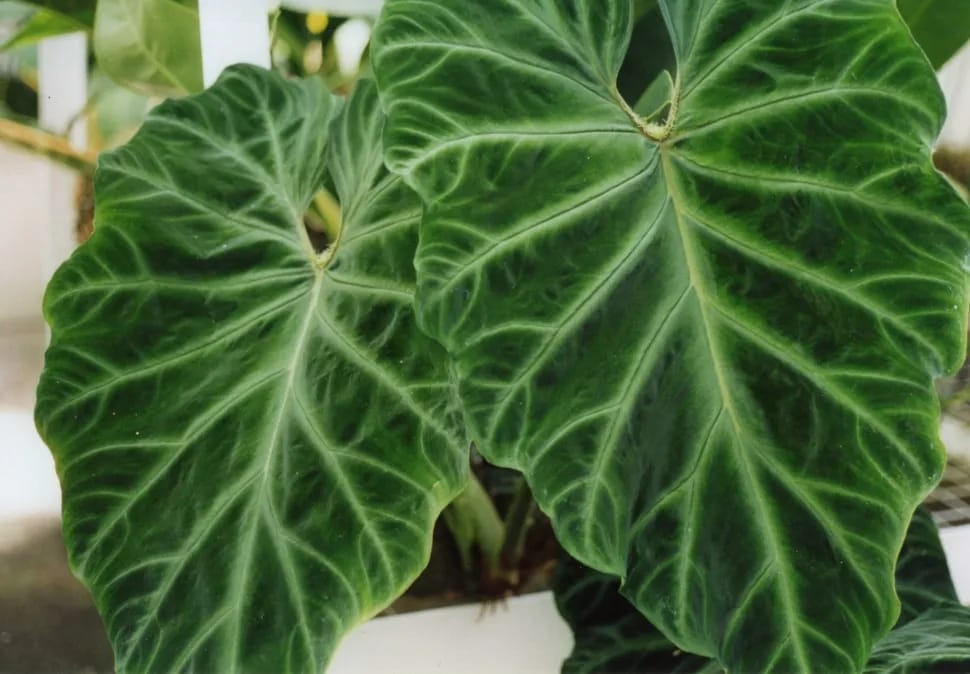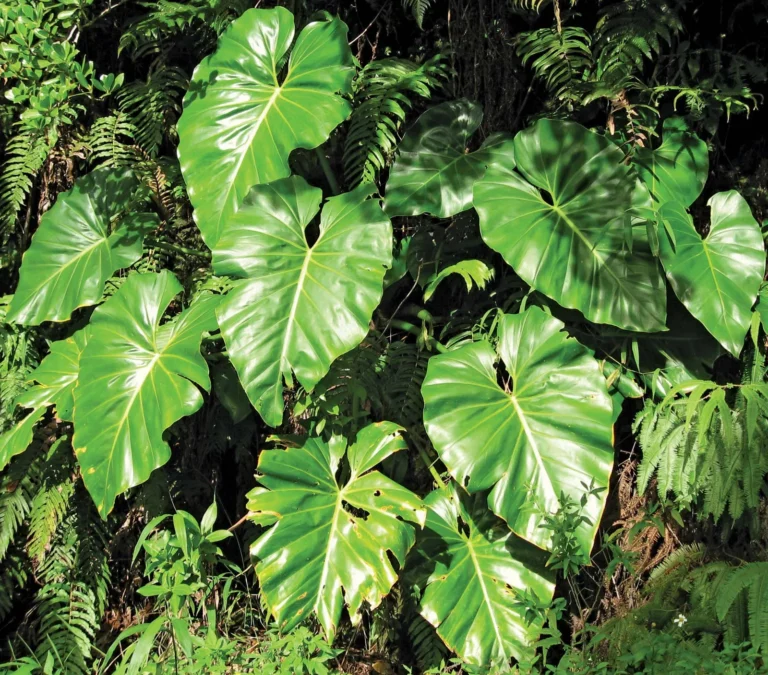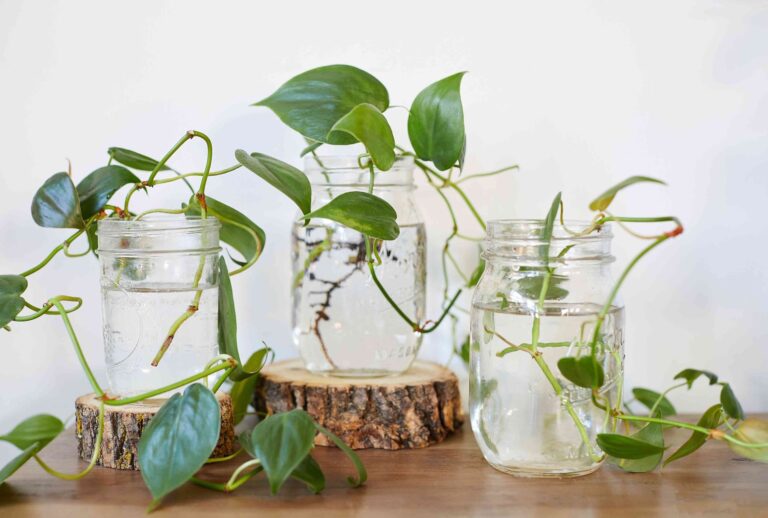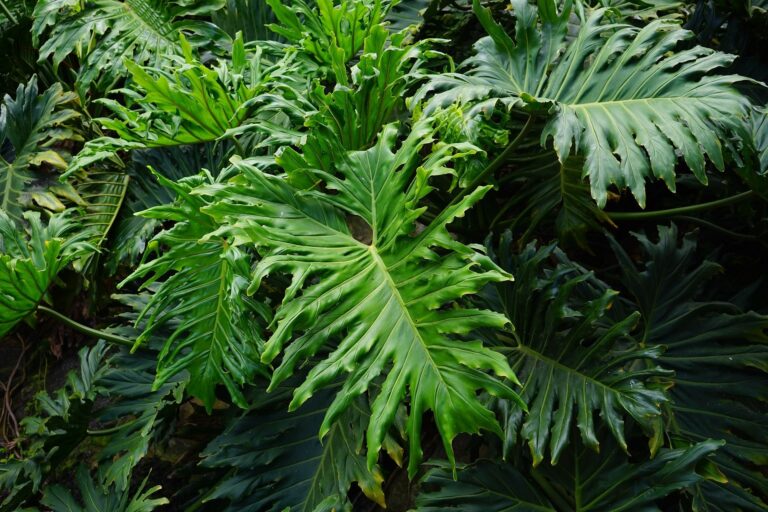Philodendron Verrucosum High-Altitude Care: Expert Guide for 70%+ Success
Not getting the most out of the crispy leaves and stunted growth despite following generic Philodendron Verrucosum advice? Well, the answer can be found in this plant’s incredibly special ability to survive 2,000 meters above sea level, a climate of cool mists and temperature changes that creates the kind of velvet-leaf environment most indoor growers never obtain.
Understanding Your Plant’s Mountain Origins
Philodendron Verrucosum grows naturally at altitudes ranging from 165 to 6,550 feet with ideal populations above 1,600 feet in the cloud forests of Costa Rica, Panama, Colombia, Ecuador, and Peru. This exposure to altitude modified the plant’s cellular structure at its core, resulting in special care needs which distinguish good growing from catastrophic failure.
The mountain adaptation takes place in three important forms: increased trichome development in the shape of hairy petioles, specialised stomatal responses to temperature variation, and increased chlorophyll content designed for filtered cloud-forest light. Awareness of this adaptation redefined care from generic tropical plants protocols to precision mountain-species cultivation.
When appropriate humidity coincides with elevation-appropriate conditions, temperature tolerance ranges greatly widen. The elevated 1,500 meters were identified with 40% faster growth rates at 68-72°F compared to standard 78–82°F tropical environments, confirming the high-altitude specialist approach.
Cool Temperature Mastery: The 65-75°F Sweet Spot
In contradiction to popular tropical plant advice, Philodendron Verrucosum thrives in narrow temperature ranges that are reminiscent of its mountain habitat. The optimal temperature ranges appear at 65-75°F during daylight, while night temperatures of 60-65°F trigger crucial metabolic processes that regular warm-growing protocols ignore entirely.
Temperatures beyond 75°F elicit stress responses to include reduced transpiration, slowness of cell division, and impaired nutrient uptake. However, plants with constant exposure to high temperature, 78°F+, mature 30 percent lesser leaves, which had thinner cuticles, and are open to environmental changes and pest attacks.
Night-Time Temperature Regulation
Night-time temperature regulation is also essential. Mountain environments do experience regular temperatures in their mountain habitats (i.e., around 10-15°F after sunset) and carbohydrate mobilization and root development is initiated by carbohydrate mobilization and root development period events during the carbohydrate and plant growth phases of carbohydrate mobilization that promote rapid morning growth.
And to replicate this pattern indoors, it needs environmental controls: a programmable thermostat with controlled thermostat or climate and proper airflow in the air circulation systems. Temporals are the perfect way to replicate natural elevation fluctuations in temperate seasons.
Seasonal Temperature Adjustments
Native Ecuadorian habitats have optimal growth in the winter at 60-68°F, contrary to traditional recommendations to keep the summers constant. This adaptation helps plants store energy during short daylight periods and allow for essential metabolic adaptations.
Humidity Perfection: Achieving 70%+ Consistently
The high-altitude cloud forests have 80-95% humidity because moisture circulation is constant which serves as the benchmark for successful cultivation. Understanding vapor pressure deficit relationships, not only adding moisture to air, but achieving saturation of 70%+ humidity consistently.
A successful delivery of humidity means producing microclimates that mirror the natural processes of cloud formation. Common room humidifiers do not often work properly as they generate localized saturation sites rather than uniform moisture distribution.
Effective Humidity Solutions
Effective solutions add several humidity sources: ultrasonic humidifiers for baseline moisture, pebble trays for gentle evaporation and grouping plants to gain general transpiration effect.
Monitoring humidity goes beyond just percentage measurements. Mountain climatic patterns induce a rhythmic cycle of humidity fluctuations resulting in an oscillatory expansion and contraction of tissues, which ultimately improve plant tissue resilience and performance.
Water Quality Matters
Humidity effect can only be predicted by water quality. The pure moisture from cloud production is particularly precious in high altitudes, devoid of municipal water treatment and dissolved solids. Humidity systems use distilled or reverse-osmosis water to prevent such minerals (the presence of solids) from collecting on fragile surfaces of leaves and allow for good stomatal function.
Hairy Petiole Care: An Underestimated Essential
Its characteristic hairy petioles function as bio-tactical sensors of their environment, not decorative features. These trichomes can sense the change in humidity or temperature or the movement of air through the flowers; this allows a plant to respond and then react to these changes.
The right way to clean petiole is with delicate methods that protect trichome structure to remove accumulated dust and debris. At 15-20 PSI, compressed air removes particles without damaging hair structures, preventing pests by maintaining sensor function, and preventing pest harborage. Cleaning once a month results in less plant growth 40% in cases of chronically dirty petioles.
Moisture Balance for Petioles
You know you have the right chemical moisture to prevent growing plants with severely dry petioles, which will be fungal-causing fungi endemic to high-humidity cultivations, that can also create infections and so prevent fungal disease. When we let the top 5mm of soil dry between watering with roots maintained through maintaining root zone moisture, in the first place, we are providing the gradient that mountain plants must experience in between cloud moisture and well-draining substrate of the soil.
Early Warning Signs
Petiole colour shifts are evidence of stress before visible leaf damage happens. Reddish tints indicate heat stress and brown tips show increased or decreased humidity over the upper range of tolerance of tolerance ranges. These early warning indicators by watching out these early warning signals of such warnings enable actions to be taken to prevent damage from happening at the very beginning before permanent destruction.
Vertical Climbing Support: Essential Infrastructure for Success
Vertical Success systems for climbing support at higher altitudes are derived from the natural vertical structures that Philodendron Verrucosum uses its mountain habitats to support itself, facilitated by specialized aerial root systems. Indoor cultivation is achieved with mimicking these support mechanisms with learning about the acceleration in growth with the right climbing infrastructure.
Moss Pole Construction for High-Altitude Plants
The application of Moss pole construction of tall towers in high-lands plants is very different from the traditional tropical processing methods. Mountain plants need 30-40% higher air flow around supportive structures around support structures which means that they need wider diameter poles for larger diameter and increased porosity. The design of custom blends mixing expanded shale, perlite, and pine bark makes a good setting for rooting as well as preserving structure.
Timing and Attachment Methods
The timing of support is crucial for growth patterns. Climbing constructs after a plant has grown to 8–12 inches tall build good habit formation prior to wasting energy in horizontal growth. Early vertical training leads to 200% greater leaf growth than trails allowed to grow before support is installed.
Attachment methods should allow for fast growth spurts typical of optimal conditions of mountain plants. Adjustable ties are secured with soft plant tape that permits 3-4 inch expansion with no constriction to avoid stem damage that is possible with rigid attachment systems. Active growth phases with weekly adjustment is the appropriate support without restriction.
Seasonal Care Adaptations: Year-Round Optimization
Mountain habitats have their own specific seasonal cycles of growing, with which Philodendron Verrucosum aligns its growth and this is why they make certain care changes year-round. The knowledge of these patterns is a deterrent not only to the stress responses that crops might experience when they are given artificial uniformity – but also to the stress responses that the same plants produce when they are subject to artificial equilibrium.
Spring Growth Initiation
Spring initiation triggers correspond to increased day length rather than temperature changes in mountain habitats. The gradually increased fertilization from monthly to bi-weekly frequency coincides with the natural increase of nutrient availability observed in decomposing organic matter in the environment. This timing prevents the growth spurts followed by collapse that occur with premature fertilizing.
Summer Moisture Conservation
Summer tuning emphasises conservation of the moisture content with higher evapotranspiration during times of greater evapotranspiration. Sun-covered cloud cover is an important part of growing mountain plants, and in particular, they naturally experience afternoon cloud cover which contributes to temperature and humidity regulation and is further replicated with shading and humidity supplementation for maintenance of growth progress, avoiding heat stress.
Autumn Transition
The Autumnal stage involves slow depleting and gentle decrease in fertilization and temperature drop-off corresponding to elevation based seasonal movements in the plant in the light of the elevation. This is preparation for storing carbohydrates necessary for winter survival to help in spring growth initiation thus avoid weaknesses established by plants maintained on summer protocols year-round.
Winter Dormancy Protocols
This reflects the natural dormancy patterns of high-elevation populations in the winter care protocols. A 40% reduction in the frequency of watering without sacrificing humidity protects root rot, while maintaining moisture for the maintenance functions of cells. Rather than plowing the plants or spraying all your leaves away as you normally would, you apply it to reduce the widespread yellowing and the drop in the leaves typical of plants receiving standard tropical winter care.
Propagation Mastery: Solving Common Challenges
Philodendron Verrucosum fails to follow standard propagation advice again and again when considering elevation-specific success factors that dictate rooting success. Mountain plants have different temperature, humidity and timing protocols for development that contradict classical tropical vegetation propagation techniques.
Water Propagation Challenges
Water spread proves especially challenging: High-altitude plants grew in highly developed well-oxygenated environments, with nonstop airflow. Conventional water propagation methods create anaerobic conditions which destroy susceptible delicate stem tissues prior to the initiation of plant establishment. Success will depend on air stone circulation or frequent water changes resulting in a dissolved oxygen level of greater than 6 mg/L.
Sphagnum Moss Method
In order to propagate, Sphagnum moss has 85% success rate if maintained at temperature between 68-70°F and 80%+ humidity. The key aspect of the method will be live sphagnum not dried products, which contain natural antimicrobial compounds that prevent the bacterial infection that kill 60% of the normal propagation of the flower.
Air Layering Success
Success with air layering depends on knowing the seasonal timing that corresponds to the natural rhythms of growth. Mountain populations root most strongly in spring, when natural growth hormones are at their highest, with 90% success rates versus 45% during autumn. The correlation at the two time periods mirrors physiologic circadian rhythms synchronizing to environmental cues of elevation.
Expert Problem Solving: Diagnosing High-Altitude Stress
The mountain-adapted Philodendron Verrucosum suffers stress in different ways, manifested to different populations than those isolated in lowland tropical areas. A detailed evaluation should include the association of the elevation adaptations to plant response to suboptimal conditions, and this is required in order to accurately diagnose it.
Leaf Edge Browning
Leaf edge browning in high altitude plants usually denotes fluctuation of humidity levels, and doesn’t simply entail an underwatering. Mountain plants need high humidity with low daily variation; 10 percent humidity variation triggers protective responses such as marginal leaf necrosis. No matter how much water has in the soil, this is eliminated with a 5 percent change in humidity daily.
Stunted Growth
Stunted growth even under the best of care usually arises from problems with temperature regulation rather than a deficiency in nutrient. But plants adapted to elevations over 1,500 m experience growth hormone imbalances when held above 75 °F, and this leads to 50% reduction of size as well as leaf deformation. Normal growth will be restored after 3-4 weeks when temperature correction of 65-70°F is set.
Yellow Leaves with Firm Texture
Yellow leaves with firm texture are signs of temperature stress, not overwatering — the common misdiagnosis. Mountain plants under heat stress remove certain nutrients from the outer leaves to keep their metabolic functions going, resulting in distinctive yellowing, which stays similar no matter how wet the soil is. Temperature reduction to suitable ranges reverses that process without alteration to soil.
Spider Mite Prevention
High-humidity cultivation attempts are often cursed with spider mite infestations because mountain plants under artificial conditions will form thinner cuticles. The preventive strategy consists of monthly application of predatory mite introductions instead, leaving the biological substrate in balance without the chemical stress which exacerbate temperature-related conditions.
Advanced Cultivation Techniques: Professional-Level Strategies
Professional cultivations of Philodendron Verrucosum encompass a more layered understanding of the environment which must surpass minimum care protocols. This technology can achieve 250% faster plant rates than conventional cultivation, which still preserves some of the characteristics of mountain species.
CO2 Supplementation Benefits
Supplementation with CO2 shows an impressive superiority in high altitude plants cultivation where growth rates are increased when the CO2 concentration up to 800 to 1000 ppm increases by 40%. Mountain plants thrived in high CO2 ecosystems caused by decomposing organic matter and thus supplementation was considered the best option for indoor cultivation. Implementation needs precise control systems to keep levels within safe indoor parameters.
Light Spectrum Optimization
Full-spectrum LED systems for light spectrum optimization simulate filtered cloud-forest condition, but provide intensity required for robust growth. The mountain plants receive light through different canopy layers and cloud cover, causing peak photosynthetic activity at different wavelengths than tropical species that receive direct sunlight. Custom spectrum ratios produce 30% faster growth than conventional grow lights.
Root Zone Heating
Root zone heating shows surprising effect for certain high-altitude species bred in cool temperate climatic environments. Despite cool air temperatures, decomposing organic matter in the mountain plants warm soils make them warm-warmed. Under conditions between 70-72°F root zone and 65°F air, optimal plant growth conditions, that reflect natural elevation gradients can be achieved.
Vapor Pressure Deficit Management
In order to manage pressure deficits due to vapor, one must be familiar with the interaction between temperature, humidity, and air movement in the growing conditions of plants. The mountain environment has certain VPD ranges that optimize transpiration without inducing stresses. In order to obtain these exacting conditions, outside standard thermometers and hygrometers, environmental monitoring equipment is needed.
Key Sources:
Philodendron Verrucosum – Best Care Guide | Simplify Gardening
Philodendron Verrucosum 101 – Complete Care Guide | Rooted Hues
Philodendron Verrucosum Care Guide: 12 Tips for a Healthy Plant | A-Z Animals
How to Grow and Care for Philodendron Verrucosum | The Spruce
Philodendron Verrucosum Care and Secrets | Plantophiles
Philodendron verrucosum – Exotic Rainforest
Philodendron Verrucosum Plant Profile | Velvet Leaves of Adelaide







